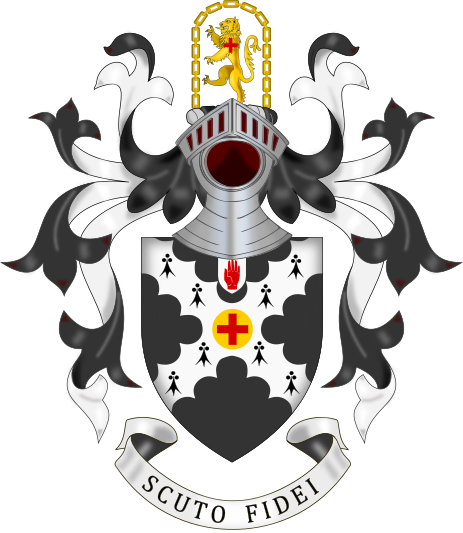 |
BlazonShield: Sable, on a saltire engrailed Ermine, a bezant charged with a cross couped Gules. in chief, an escutcheon of the badge of a baronet of the United Kingdom. Crest: A lion rampant Or charged on the shoulder with a cross couped Gules, within a chain in the form of an arch Or. Motto: Scuto Fidei (By the shield of faith) |
The Morris family's connection to Swansea began in 1724 when Robert Morris (d.1768), a Shropshire entrepreneur, arrived in Swansea to supervise the Llangyfelach Copper Works. He took over the works two years later when their owner, John Lane, was declared bankrupt.
Robert's son, Sir John Morris, Bt, succeeded him in running the business. In 1768, Sir John initiated the construction of the village of Morriston to house workers from his copper-smelting and coal-mining businesses. He was created a baronet in 1806.
The baronetcy survives today with the 11th baronet, Sir Alan Lindsay Morris. Among the baronets have been Sir George Lockwood Morris (29 January 1859 - 23 November 1947), who, as well as being an industrialist and iron founder, also played rugby for Swansea RFC and five times for Wales (his short international career took place between 1882 and 1884). He inherited the baronetcy from a distant cousin at the age of 88, just three months before his death.
Sir George's son, Sir Cedric Lockwood Morris (1889-1982), was a noted artists and plantsman. Although born in Sketty, Swansea, he spent most of his life elsewhere, mostly notably in East Anglia, where he established the East Anglian School of Painting and Drawing. Among his students was the painter Lucien Freud.
The first baronet had a younger sister, Margaret. She married French art collector and dealer Noel Desenfans and, along, with their friend Francis Bourgeois, they built up an art collection which became the basis of the Dulwich Picture Gallery.